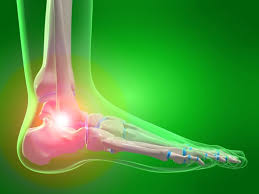Athletes rely heavily on healthy feet and ankles for optimal performance. Whether sprinting on a track, pivoting on the court, or powering through a long-distance run, the foot and ankle act as essential components to an athlete’s movement. Here’s how podiatrists play a pivotal role in sports medicine by addressing conditions that may hinder athletes’ abilities, while improving their overall biomechanics:
Enhancing Athletic Performance
Biomechanical assessments are a central focus in podiatric care for athletes. These evaluations examine how the foot, ankle, and lower body work together during movement. By identifying inefficiencies or abnormalities in gait, podiatrists refine these mechanics, enabling athletes to move with better alignment and efficiency. This leads to improved performance and reduced strain on key areas of the foot and ankle.
- Gait analysis: Evaluates running or walking patterns to correct any irregularities.
- Custom orthotics: Tailored insoles that provide better support and alignment.
- Strength and conditioning guidance: Targeted exercises to improve lower limb function.
Reducing the Risk of Injuries
Repetitive stress, poor footwear, and overtraining often create a recipe for injuries in high-performing athletes. Podiatrists play an active role in crafting injury prevention strategies suited to specific sports. For instance, a podiatrist working with a soccer player may focus on strategies to prevent ankle sprains, while a specialist assisting a runner might emphasize preventing plantar fasciitis. Selecting the right shoes for both training and competition helps to reduce injuries. Providing support for vulnerable joints prone to injury and reducing muscle and tendon tension also helps.
Managing Foot and Ankle Conditions
Despite effective prevention methods, injuries or conditions occasionally develop, especially under the high demands placed on athletes’ feet. Podiatrists offer effective solutions for these challenges, ranging from overuse injuries to acute trauma. Typical concerns such as shin splints, Achilles tendinitis, and stress fractures are often within a podiatrist’s scope of expertise.
- Non-invasive therapies: Offering ice treatment, massage, and physical therapies to relieve pain and aid healing.
- Surgical consultation when needed: Collaborating with other professionals to address severe cases.
- Follow-up care: Monitoring progress to ensure athletes stay on track with their recovery.
Promoting Rapid Recovery
For athletes, returning to the sport they love is a priority after an injury. Rehabilitation under the care of a podiatrist helps create personalized recovery plans tailored to the athlete’s condition and sport. Each stage of recovery is crafted to rebuild strength and flexibility. Gradual return-to-play programs provide structured timelines to ease athletes back into activity safely. Functional tests are assessments to determine readiness for competition. Ongoing education teaches athletes to maintain their health and avoid future setbacks.
Find Podiatrists Specializing in Sports Medicine
Aside from the clinical advantages that podiatrists bring to sports medicine, their role extends to providing a compassionate partnership. Athlete-focused treatment plans build trust and foster collaboration between the athlete and specialist. By empowering athletes with knowledge about their feet and their overall physical health, podiatrists help lay the foundation for both immediate and long-term success. Foot and ankle health directly impacts athletic success, making it a priority for any athlete aiming for peak performance. Find a podiatrist to enable more substantial returns to competition through tailored rehabilitation and expert care.
- How To Improve Gut Health – Boost Digestion, Energy & Immunity!
- Is Coffee Beneficial To Health – Expert Insights You Can’t Afford To Miss!
- TimesHealthMage Diet Plans For Diabetics – Manage Blood Sugar The Smart Way!
- Which Type Of Exercise Is Best For Improving Cardiorespiratory Fitness – Expert Advice!
- Fitness Ryldoria Vornik – A New Way To Feel Strong!


Leave a Reply